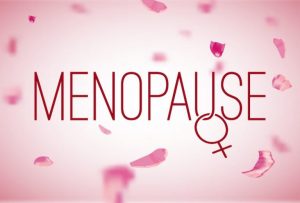Women and girls have specific health needs from very early on. Cervical cancer, pregnancy and menopause are exclusively female health concerns, while female risk of heart disease, depression, anxiety and urinary tract infections are higher than that of men.
A woman’s body goes through a myriad of changes throughout their life, largely driven by the increased or reduced production of sex hormones, including oestrogen. Oestrogen controls the development and release of an egg each month and the way the womb lining thickens, throughout child-bearing years. As with everything, this requires balance.
Oestrogen dominance is the term used when oestrogen and progesterone are out of balance, i.e. too much circulatory oestrogen vs progesterone. Signs and symptoms of this include migraines, increased PMS, bloating, anxiety, irregular menstruation and fatigue. Long term concerns are of this leading to endometriosis, fibroids and oestrogen related cancers.
The main causes of oestrogen dominance are:
- Hormone disrupting chemicals, such as BPA in plastic
- Poor digestion and liver function, preventing excretion of oestrogen
- Stress
- Too much sugar
- Carrying excess weight
- Nutrients or lack thereof (B vitamins, Magnesium, zinc, omega 3 fatty acids and protein)
- Hormonal contraception and HRT.
The most common nutritional intervention to reduce this is to support liver detoxification and enable the body to metabolise and excrete excess oestrogen. The first port of call would be to relieve any constipation, through sufficient fibre, hydration and magnesium supplementation. B vitamins, glutathione, protein and antioxidants are all required in the phases of detoxification to ensure the safe and efficient excretion of waste products.
During menopause the levels of circulating oestrogen and progesterone drastically reduce, and in the months or years leading up to this, signs and symptoms of hot flushes, irregular periods, vaginal dryness, night sweats, mood changes and many more may be experienced. Due to the varied activity of oestrogen, menopause is associated with the onset of a range of physiological functions including osteoporosis and cardiovascular disease.
Osteoperosis is common in postmenopausal women as the drop in oestrogen leads to more bone dissolution than formation. During this time, bone strengthening minerals and vitamins are highly important to maintain healthy bone mass and strength. Since childhood we have been told we need calcium for healthy bones but it has often been missed that we also require vitamin D3 and K2 to ensure this is properly absorbed and deposited on the bones rather than in the arteries.
Menopause doesn’t have a direct cause and effect relationship with cardiovascular disease, but risk factors are increased for women after this time. This may partially be linked to the drop oestrogen and use of hormone replacement therapy, which can lead to a harmful state of the body, known as oxidative stress. For this reason the key nutrients used to support normal heart health are antioxidants including vitamin E, C and coenzyme Q10.
A high quality, methylated multivitamin containing zinc, and vitamins A, C, E and B complex can be highly supportive for normal hormone function in women of all ages, as can managing stress levels, reducing toxic environmental exposure and regular exercise.
Sources
Nutrition and Female Fertility: An Interdependent Correlation
Selected vitamins and quality of life in menopausal women




